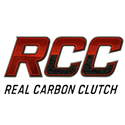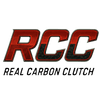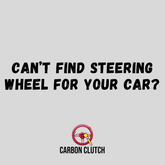The Manufacturing Process of Carbon Fiber Steering Wheels.
Carbon fiber is a high-strength, lightweight material that is becoming increasingly popular in the automotive industry, especially in the manufacture of steering wheels. The unique properties of carbon fiber make it an ideal material for steering wheels, offering improved performance, durability, and aesthetic appeal. In this blog, we'll explore the manufacturing process of carbon fiber steering wheels, from the raw material to the finished product.
-
Raw Material: The first step in the manufacturing process of carbon fiber steering wheels is the sourcing of the raw material. Carbon fiber is made from carbon fibers, which are thin strands of carbon. These fibers are typically produced from precursors such as polyacrylonitrile (PAN), rayon, or petroleum pitch.
-
Weaving: Once the carbon fibers have been produced, they are woven into a fabric. This fabric can be woven in a variety of different ways, including plain weave, twill weave, or satin weave, to produce different properties such as strength, flexibility, and appearance.
-
Resin Infusion: The next step in the manufacturing process is to infuse the carbon fiber fabric with a resin. The resin provides the strength and durability that makes carbon fiber such a popular material. This process is known as resin infusion, and it involves saturating the carbon fiber fabric with the resin, which is then cured to produce a solid structure.
-
Molding: Once the resin has been infused and cured, the carbon fiber composite is ready to be molded into the desired shape. This is done using a mold, which is typically made from a material such as aluminum or steel. The carbon fiber composite is placed into the mold and then subjected to high temperatures and pressure to produce the final shape.
-
Trimming and Finishing: After the carbon fiber composite has been molded, it is removed from the mold and trimmed to the desired size. Any excess material is removed, and the surface of the composite is finished to produce a smooth and even surface.
-
Assembly: The final step in the manufacturing process is to assemble the carbon fiber steering wheel. This involves attaching the necessary components, such as the airbag, buttons, and controls, to the steering wheel. The steering wheel is then inspected for quality and tested for performance before being packaged for shipping.
In conclusion, the manufacturing process of carbon fiber steering wheels is a complex and intricate process that involves a number of different steps. From the sourcing of the raw material to the final assembly, each step is carefully controlled to ensure the highest quality and performance. Whether you're a performance driver looking to improve your lap times, or just someone looking to add a touch of style to your vehicle, a carbon fiber steering wheel is the perfect choice.








